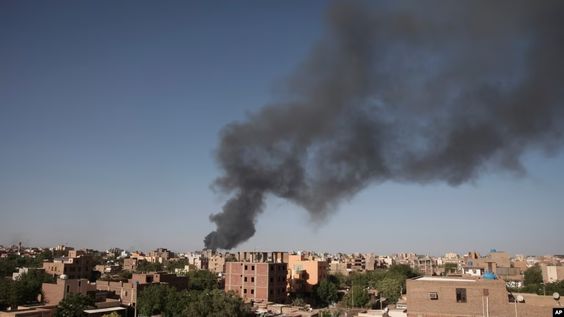Africa
First US citizen evacuation from Sudan war is carried out

In the first U.S.-led evacuation, hundreds of Americans who had been escaping two weeks of deadly violence in Sudan arrived at the port on Saturday after a perilous land journey and the protection of armed drones.
Military overwatch for a bus convoy bringing 200 to 300 Americans over 800 kilometers to Port Sudan, a location of relative safety, was supplied by American unmanned planes, which had been monitoring overland evacuation routes for days, according to U.S. authorities.
Families of trapped Americans in Sudan have criticized the United States for initially ruling out any U.S.-run evacuation for anyone among the estimated 16,000 Americans in Sudan who wish to leave. The U.S. had no officials on the ground throughout the evacuation.
On April 22, American embassy staff members and other American government employees were airlifted out of Khartoum by U.S. special operations troops. Over a dozen other countries have already started evacuating their citizens, using a combination of military aircraft, navy ships, and on-the-ground personnel.
Tens of thousands of Sudanese have fled to safer areas, and foreign countries have evacuated thousands of their citizens by land, air, and sea as a result of the numerous fragile temporary cease-fires that a diverse group of international mediators, including African and Arab countries, the United Nations, and the United States, have only been able to achieve.
Refugees witness dead in the streets.
Although American officials have attempted to link Americans with other countries’ evacuation efforts, the U.S. has warned its citizens that they must make their own way out of the country since the conflict between two rival generals broke out on April 15. But everything changed as U.S. officials took advantage of a brief respite in the battle and, from a distance, planned their own convoy for Americans, according to officials.
Many Americans are forced to travel the perilous overland route from Khartoum to the nation’s principal Red Sea port, Port Sudan, because other nations do not provide evacuation flights close to the city for their nationals. One Sudanese-American family who had previously made the journey recalled driving through multiple checkpoints guarded by armed men as well as seeing the vehicles and dead bodies of other fleeing families who had been killed along the way, as well as bodies lying on the street.
According to Matthew Miller, a spokesman for the US State Department, the convoy included US nationals as well as locals employed by the US and citizens of other allies. We once again advise Americans not to visit Sudan, he said.
The Americans in the convoy can look for space aboard ships traveling across the Red Sea to the Saudi port city of Jeddah from Port Sudan, far from the conflict. Additionally, American officials are coordinating with Saudi Arabia to see if one of the country’s naval ships can transport more Americans to Jeddah.
Although there is no American personnel in Port Sudan, U.S. consular officials will be waiting for the Americans when they arrive at the dock in Jeddah, according to officials.
stabbed American doctor
The battle that started on April 15 has so far claimed the lives of two Americans. One of them, according to officials, was a U.S. civilian who was hit by stray fire. The other victim of the uncontrolled violence that has accompanied the conflict was a doctor from Iowa City, Iowa, who was stabbed to death in front of his home and family in Khartoum.
In total, more than 500 people have died as a result of the fighting in the nation of east Africa.
On April 22, the United States closed its embassy and evacuated out all of its diplomats and military personnel. Many of the thousands of dual citizens who were left behind in Sudan were Americans.
The Biden administration had issued a warning that it had no intention of joining other nations in planning an evacuation for common Americans who desired to leave, citing the fact that it would be too perilous.
